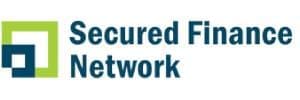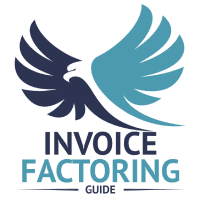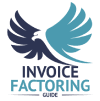Factoring Line of Credit
If you’re looking for a flexible financing option for your business, a factoring line of credit may be the solution you need. This type of financing allows businesses to access working capital quickly by leveraging their accounts receivable. Here’s what you need to know about how it works, how it differs from other financing options, and why it may be a better option than a traditional bank loan.
How a Factoring Line of Credit Works
A factoring line of credit blends the benefits of factoring and a line of credit, providing businesses with access to funds while maintaining control over their receivables. Instead of waiting for customers to pay their invoices, companies can draw from their available credit limit and use factoring work to bridge cash flow gaps. Here’s how it operates:

Because factoring companies don’t purchase invoices at a discount, businesses avoid the dependency on external financing while keeping more control over payments. Additionally, factoring fees tend to be lower than the interest rates on a line of credit from a bank.
Factoring Line of Credit vs. Other Financing Options
While factoring and a line of credit share similarities, different financing options come with unique terms and benefits. Below is a comparison:
Since factoring involves selling invoices, some businesses prefer a line of credit that can help them retain full ownership while still benefiting from quick business credit access. Whether opting for recourse factoring, non-recourse factoring, or accounts receivable factoring, choosing the right invoice factoring company ensures minimal risks and better cash flow management.
Why a Factoring Line of Credit is Better than a Bank Loan
A factoring line of credit is a powerful alternative to a bank line of credit, offering businesses a steady flow of capital without the rigid requirements of traditional business financing. Unlike a business line of credit, which often requires a strong credit history and financial backing, factoring allows companies to access working capital based on their accounts receivable rather than their credit score.
Here’s why a factoring line of credit offers more flexibility than a traditional bank loan:
Choosing a reputable factoring company is key to ensuring competitive rates, transparent terms, and the best business credit solutions. By comparing factoring fees, repayment terms, and funding speed, businesses can determine whether invoice factoring or a bank loan is the better option for their needs.
Understanding Factoring Fees and Costs: What to Expect
To determine if factoring aligns with your budget and business goals, it’s essential to first understand how factoring fees are calculated.
How Factoring Fees Are Calculated
Factoring fees typically range between 1percent and 5percent of your invoice amount based on things like customer creditworthiness, invoice volume, and industry risk. For example, on an invoice valued at $20,000 with a 3percent factoring fee, you’d pay approximately $600. This fee structure provides transparency and predictability, making budgeting simpler. However, businesses should carefully review factoring agreements to confirm if any additional administrative fees apply. Clarifying these terms early prevents unexpected costs and ensures alignment with your cash flow expectations.
Comparing Factoring Costs with Traditional Financing
While a traditional line of credit typically involves variable interest rates, monthly repayments, and often hidden maintenance fees, factoring offers straightforward costs based directly on your invoices. Although traditional financing may appear cheaper at first glance, the total cost can increase due to accumulated interest, rigid repayment terms, and additional fees. In contrast, factoring charges a clear percentage per invoice without accumulating debt, simplifying cash management for businesses with irregular cash flow or limited credit history.
How to Qualify for a Factoring Line of Credit
Qualifying for a factoring line of credit is typically easier than obtaining a traditional bank loan. Factoring companies primarily focus on the creditworthiness of your customers rather than your business’s financial history. By demonstrating a strong customer base and a history of timely invoice payments, your business is more likely to secure a factoring line of credit.
Get Started with a Factoring Line of Credit
Ready to see what a factoring line of credit can do for your business? Contact Invoice Factoring Guide today! Fill out the simple form with your contact information, company name, phone number, email address, and industry. We’ll help you unlock the financial flexibility you need to succeed.
Frequently Asked Questions About Factoring Lines of Credit
How is a factoring line of credit different from traditional invoice factoring?
While both options use invoices to a factoring company to generate cash flow, there are key differences. In traditional invoice factoring, you sell individual invoices at a discount, and the factoring company often handles invoice processing and collections. With a factoring line of credit, you retain control over collections and draw funds as needed from a pre-approved limit based on your accounts receivable balance. This makes it a more autonomous, credit-style solution for businesses seeking ongoing flexibility.
Is a factoring line of credit better than a bank line of credit?
For many businesses, yes. A bank line of credit often requires a strong credit score, collateral, and lengthy underwriting. In contrast, factoring is generally easier to qualify for because approval is based on the strength of your customer payment history, not your own credit. Additionally, factoring can be a good fit for businesses with inconsistent cash flow, because it grows in proportion to sales and doesn’t involve long-term debt or rigid repayment terms.
What are the typical fees and costs associated with a factoring line of credit?
actoring fees are usually calculated as a percentage of the invoice—typically between 1 percent and 5 percent. These costs depend on factors like invoice size, customer creditworthiness, industry risk, and the specific terms of the factoring line. Unlike loans with compounding interest, factoring fees are transparent and tied directly to the portion of the invoice value you advance, simplifying budgeting and cash flow forecasting.
Who should consider using a factoring line of credit?
A factoring line of credit is ideal for business owners who need fast, recurring access to working capital—especially those in industries with long payment cycles. If your company struggles with delayed receivables but wants to maintain control of invoice processing and customer relationships, this type of factoring may offer the liquidity and autonomy you need. It’s especially useful for companies looking to reinvest in your business without accumulating traditional debt.
Factoring Companies Chosen By Business Owners
“Awesomeness personified. This company saved our business. Instead of having to wait around 2 months for our payments we get them within days.”
“I was completely impressed with their professionalism and customer service.”
“Our transition has been very smooth and easy.”
“They give me the fast cash I need and the team there is great. My rep always takes the time to help me out.”
“I had a great experience from the onboarding to the factoring.”
“The people there really care about you and I’m very happy with the service I’ve gotten.”
Get an instant funding estimate
Results are estimates based on the calculated rate and the total invoice amount provided.
Actual rates may vary.
Request a Factoring Rate Quote
PREFER TO TALK? Call us at 1-844-887-0300
A Network Featured by the Media
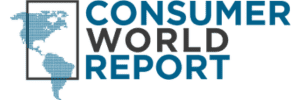
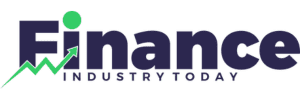
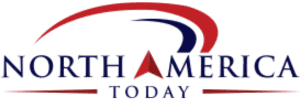
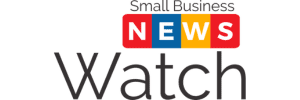


Partners Affiliated with Industry Leaders

